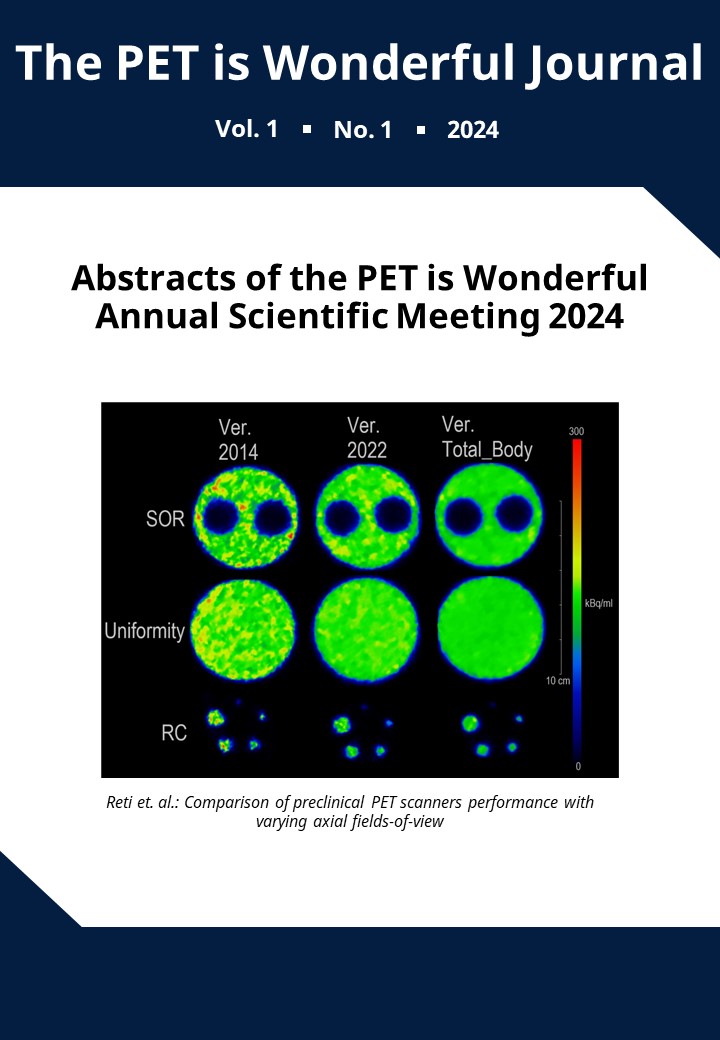Chemoradiotherapy treatment increases cardiac and aortic [18F]FDG uptake ratios in lung cancer patients
DOI:
https://doi.org/10.2218/piwjournal.9966Resumen
[18F]Fluorodeoxyglucose (FDG) positron emission tomography (PET) is an indispensable non-invasive imaging tool to aid diagnosis, prognostication, and therapeutic monitoring in oncology, but it can also evaluate cardiovascular inflammation1,2. Previously, cardiac metabolic changes using [18F]FDG with chemoradiotherapy have been explored3 but changes in the rest of the cardiovascular system remain undetermined.
To investigate the cardiovascular metabolic changes pre- and post-chemoradiotherapy in stage 3b non-small cell lung cancer (NSCLC) patients.
A retrospective analysis of 26 patients (43-82 years) with stage 3b NSCLC from the American College of Radiology Imaging Network (ACRIN 6668) trial was performed3. All available pre- and post-treatment imaging were retrieved from the Cancer Imaging Archive (TCIA)4 and regions of interest for the left ventricle and calcified large arteries were contoured on all PET-CT scans using PMOD version 4.0 software. The mean, maximum standard uptake value (SUVmean and SUVmax) and target-to-background ratio (TBR) were quantified on PMOD.
At approximately 14 weeks post-chemoradiotherapy, there was a higher SUVmean (mean difference 0.81, p=0.01) and SUVmax (mean difference 2.20, p=0.006) in the left ventricle compared with pretreatment scans. TBR for aorta was higher post-treatment (mean difference 0.06, p=0.005). However, SUVmean for carotid arteries and right brachiocephalic artery was reduced post-chemoradiotherapy (mean difference 0.15, p=0.008 and mean difference 0.28, p=0.03). A reduction in SUVmax was also seen for aortic arch (mean difference 0.58, p=0.03) and right brachiocephalic artery (mean difference 0.42, p=0.03 and mean difference 0.42, p=0.03).
Cardiovascular glucose metabolism is selectively increased in the left ventricle and aorta post-chemoradiotherapy. Changes in glucose metabolism of atherosclerotic plaques vary across different vessels throughout the body.
Please click on the 'PDF' for the full abstract!
Descargas
Publicado
Número
Sección
Licencia
Derechos de autor 2024 Phyo Khaing, David Newby, Adriana Tavares

Esta obra está bajo una licencia internacional Creative Commons Atribución 4.0.





